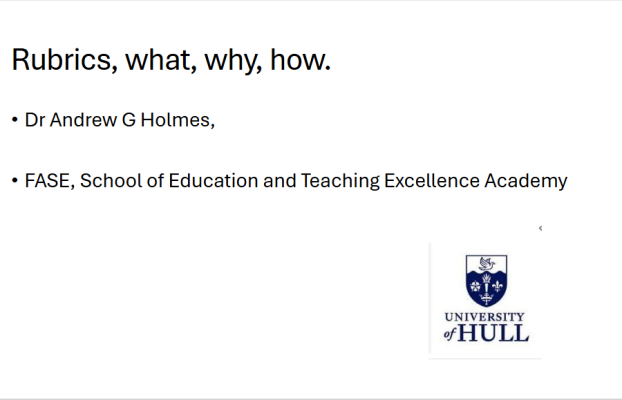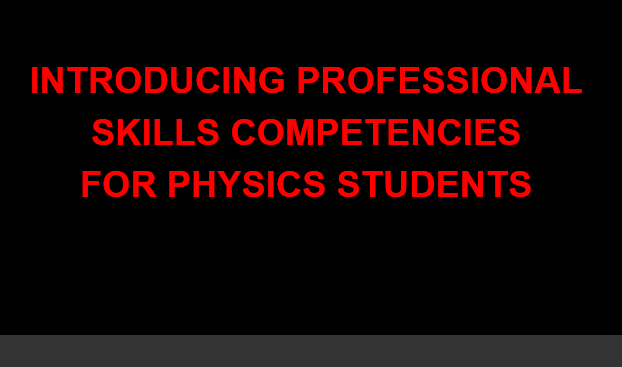Assessing Competence
Assignment Briefing Materials are the backbone in ensuring all your students have a fair and equal understanding of what they need to do.
The materials should address each of the points below, in a way that ensures that students have access to the information they need at the time that they need it (which may not necessarily always be at the start of the teaching process). Students need to be able to:
- Understand what is required, when it is required by and the standard of work necessary for success (the expectations).
- Feel confident in their ability to find and engage with the resources/activities that will help them develop the competency required to meet these expectations.
- Appreciate the value of the assignment task and how it will help them achieve their aspirational futures.
- Understand the elements of the task that they have autonomy in, reducing as far as possible uncertainty in how to approach and complete the assignment.
We suggest that a standard format for Assessment Briefing Materials is used across all modules at all stages of the programme. These materials should use jargon-free language and inclusive formats that can be understood and used by all stakeholders.
Lecturers can minimise the need for requests for further clarification by being explicit about what the student needs to take independent ownership of (e.g. topic, style, format, drafts, etc.). By removing the Hidden Curriculum around assessment, educators can ensure that learner cognitive capacity is focused on completing the assignment and not on having to somehow work out (or implicitly understand) what is expected of them.
High-impact practices
- Provide students with opportunities to discuss and apply marking criteria in a meaningful way, through peer-review or discussions of exemplar assignments.
- Include opportunities to discuss the value of the assignment and how it aligns to students’ aspirational futures, ideally with people within the relevant industry/profession.
- Iterative and process-based assessment that embeds a cycle of practice and feedback prior to submission of a final assessment product.
- Student-facing marking criteria that focus on what students need to do to achieve a good grade and positively inform the assignment production process.
Programme teams work collaboratively to create a consistent process that provides an appropriate mixture of documentation and meaningful opportunities for discussion. Guidance on designing effective assignment briefs
Assessment Marking
Marking criteria act as the bridge between assessment briefing, student production, and lecturer feedback. To do this, they should aim to clearly grade student competence, and be supported by a process that is appropriately explicit, reliable and efficient.
Clear
Marking criteria should use jargon-free language and inclusive formats that can be understood and used by all stakeholders.
Competence-based
The marking process and documentation should aim to accurately quantify the extent to which the programme competencies have been evidenced within the submission.
Appropriately Explicit
Criteria should be sufficiently detailed so that they are transparent to all stakeholders, yet not so restrictive that they remove judgement and student creativity.
Consistent
Grades allocated are congruent / harmonised within and across graders and modules; i.e. inter-and intra-marker consistency.
Reliable
Collectively these facilitate stakeholder trust in assessors’ decisions about grades and achievement of competences. The grading process is objective, fair, equitable, and trustworthy and enables students to understand and recognise that criteria are used consistently by different markers and are therefore unbiased and ‘fair’ at module and programme-level. The Hidden Curriculum is removed.
Efficient
Facilitate efficient grading, that is fairly distributed among staff and aim for the timely provision of feedback.
Action
Programme teams work collaboratively to create a coherent set of assignment-specific marking criteria and a standardised process for explaining ‘how assessment is organised and operates’ within the programme. Criteria should be available to students before they start any work. The process used to ensure that grading is transparent, consistent, and reliable should be clearly explained to students.
Assessment Feedback
Feedback guides student development of the programme competencies for the future and encourages action.
Developmental
Allows students to build their self-efficacy by understanding their current level of competence & guides their future development and development of competence.
Particularly through explicit links to:
- Future assessments where they can action the feedback.
- Where they can find guidance on how to improve their work.
Encourages action
Maximises the likelihood of student engagement with the feedback and build their self-efficacy; through appropriate language, format, timing, and capacity building.
Language = Empathetic, Constructive, Understandable and Actionable – Students are most likely to engage with feedback that is constructive and includes an appropriate balance of strengths and areas for improvement. The language used must be able to be understood by the student in the context of their learning journey.
Format = Focused – Students are most likely to act on feedback that is focused on a small number of highly important areas for improvement (aim for 4-7 points spread across both positive and negative aspects).
Timing = Relevant – Students are most likely to engage with feedback at the point that they need it. Encourage students to re-visit previous feedback prior to starting new assignments.
Capacity building = Embedded – Students are most likely to act on feedback if they have effective strategies that allow them to do so. The development of effective assessment literacy should be built into the curriculum, providing tools, and strategies to manage both the emotional and practicable aspects of engaging with the feedback process.
Programme teams work collaboratively to create a feedback ‘contract’. In the contract there should be:
- An agreement of the timeframe within which feedback will be returned.
- A plan of how student feedback literacy will be developed within the curriculum.
- An agreement on how and in what format students can expect feedback to be returned to them.
- A template that helps staff condense their feedback into a small number of actionable points.
Action
This is a well-researched and developed topic within Higher Education. We recommend the AdvanceHE Feedback toolkit as a key resource for improving student feedback literacy and developing an effective and efficient feedback process.Discover competence based assessment through our partner case studies.

